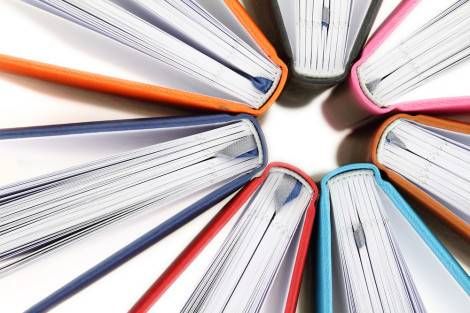
8 Reasons to Catalog Your Books (and How to Do It)
While we at the Riot take some time off to rest and catch up on our reading, we’re re-running some of our favorite posts from the last several months. Enjoy our highlight reel, and we’ll be back with new stuff on Monday, July 11th.
This post originally ran January 14, 2016.
There’s something about being a bookselling book nerd that makes you want to bring your work home with you. Which is why, about a week after doing our store’s inventory, I decided I wanted to inventory all my books.
Yup, I scanned every single one and uploaded it to my LibraryThing. You may ask yourself: are there benefits to such a task? Or was I engaging in a mix of self congratulation (look at all my books!) and obsessive behavior? I won’t deny that I can be both obsessive and proud when it comes to my book collection, but there are benefits to knowing exactly what books you have and where you have them.
- Having your library accessible in an app or doc means never forgetting what you already own and never purchasing unwanted duplicates.
- When you lend a book out, make a note, add a tag, or (in some apps) mark the book as checked out so you never lose a borrowed book.
- If you ever lose the library due to fire, flood, or other disaster you can use the list to rebuild your collection and (depending on your insurance) possibly recuperate some of the money lost
- Share the list with your family/friends and they’ll never buy you a book you already own.
- If you’ve decided to ban yourself from buying new books, well every time you’re in a bookstore, look at your list and admire all the unread books you already own.
- Track where/when you bought the book, and help preserve memories associated with the purchase.
- Reorganize your library on paper first—whether by genre, author, pub date, etc.—to make the actual restructuring easier.
- STATS. Do you own more books by men or women; more sci-fi or historical; short story collections or novels; Americans or Brits? Inventory your entire library and find out.
See? Eight reasons that aren’t (necessarily) about being a crazy book nerd.
Alright, so you’re convinced. You’ll want to choose a program in which to store your inventoried library. There are many to choose from—there’s libib, Goodreads, booklikes, Delicious Library, and countless others (most I have not tried). But LibraryThing—whose praises I’ve sung once or twice before—is my go to book cataloger. LT is super customizable, allows for both tagging and collections, tracks multiple reading dates, lets you to note where and when you got the book, and can helps you track books you’ve lent out.
But you do you: choose a program that feels and looks good, and suits your needs. Make sure it either has an app to scan books into or can upload .csv, .txt, or .xlsx files.
Next you’ll need a barcode scanner. You could buy one, but they can be expensive (though—not to continue fangirling—LibraryThing sells a cheap one in the shape of a cat). Fortunately there’s an app for that. Many, in fact, and some are built for your book cataloger of choice.
So you’ve got a cataloging program, a barcode scanner, and a bunch of books. I recommend scanning shelf by shelf to easily track what you’ve scanned and what you haven’t. You can scan straight into your cataloging program (depending on the system), or into a text or excel file.
Pull the book off the shelf just enough to grab the barcode, scan, push it back. And repeat ad nauseum. If you come across a book that has no barcode or has a sticker over the barcode, learn from my mistake and don’t pull said book off the shelf. You will likely encounter many of these, leading to towering piles. Instead, just flip the book on its side and return to it later.
Side note: what you’re scanning is the ISBN of the book, if the store you purchased the book from covered up the original barcode with one of their own, it may not be the book’s actual ISBN and therefore may not scan. I put books like this on their side just in case.
Once you’ve scanned all your books (don’t forget the ones on their sides, which you may have to enter manually) and uploaded them to your inventory program, you’re ready to start organizing!
Have other methods and systems for tracking your books? Tips on doing inventory? Stats about your personal library? I’d love to hear it all! Especially stats.





